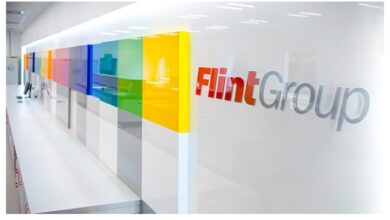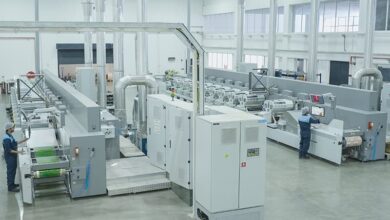Xerox Responds to Carl Icahn and Darwin Deason Open Letter
Xerox has issued the following letter from its Board of Directors to its shareholders in response to the February 12, 2018 letter from Carl Icahn and Darwin Deason:
The Board of Directors (the “Board”) of Xerox Corporation (“Xerox” or the “Company”) has reviewed the February 12, 2018 letter signed by Carl Icahn and Darwin Deason (the “Letter”). To date, the Board has chosen not to engage in a public debate with our two large shareholders. However, we believe their misleading and inaccurate Letter warrants a written response to ensure the facts are clear for all Xerox shareholders.
The proposed combination of Xerox and Fuji Xerox (the “Transaction”), announced on January 31, 2018, followed a year-long comprehensive and exhaustive review of value-enhancing alternatives available to the Company. That review found that the Transaction, as currently proposed, delivers significantly more value to Xerox shareholders than would be achievable on a standalone basis.
Mr. Icahn and Mr. Deason propose that Xerox shareholders reject this value-creating Transaction in favor of putting Xerox’s future and the investment of its shareholders at risk. Their attacks on Xerox have been premised on removing:
- a Xerox management team that is successfully improving performance at Xerox, including significant outperformance relative to its own aggressive goals for the Company’s Strategic Transformation;
- members of a Xerox Board that are taking significant actions to secure the future of the Company; and
- a Fuji Xerox joint venture agreement with no viable alternatives to account for the value-destruction that would result.
We will take each of the Letter’s mischaracterizations in turn:
CLAIM #1: The Transaction undervalues Xerox and favors Fujifilm.
FALSE. Mr. Icahn and Mr. Deason suggest through suspect math that investors are “selling control of Xerox for a cash flow multiple barely exceeding 2.3x.” This analysis is just plain wrong. As discussed in prior presentations to investors, Xerox shareholders receive in the Transaction (i) a $2.5 billion dividend at closing; (ii) 49.9% of the combined Xerox and Fuji Xerox; and (iii) 49.9% of the benefit of the value created from at least $1.7 billion of annual cost savings, including $1.25 billion in cost synergies that are only achievable via this Transaction. These calculations are highlighted on page 4 in the supporting materials accompanying this letter.
A foundational driver of this Transaction is that combining Xerox with Fuji Xerox will create a company that has a significantly-enhanced competitive position and will, for the first time, be able to fully realize the benefits of industry-leading scale and global reach. Our shareholders will have the opportunity for significant participation in this value creation, which Mr. Icahn and Mr. Deason conveniently ignore.
As shown on page 5 of the supporting slides, additional value is being transferred to Xerox shareholders by virtue of the pro forma ownership achieved in the Transaction. On the basis of implied relative value of Xerox and Fuji Xerox, Xerox shareholders would own 42%-46% of the combined company, compared to the 49.9% they receive in the Transaction. Based on a $9.4 billion equity valuation of Fuji Xerox (implied by the midpoint of 7x – 8x Fuji Xerox 2018E EBITDA), Xerox shareholders are receiving more than a 15% premium to Xerox’s unaffected share price, before any value attributed to synergy realization.
Finally, the assertion that the “one-time special dividend [is] financed with our own assets” is misleading. Although it is not contributing cash, Fujifilm, as owner of 50.1% of the combined company, will bear the debt incurred to finance the dividend as the combined company will be fully consolidated by Fujifilm without receiving any portion of that dividend.
CLAIM #2: Xerox should terminate the Fuji Xerox joint venture agreements.
FALSE. Mr. Icahn’s and Mr. Deason’s suggestion of “freeing the company from the shackles of the Fuji Xerox joint venture” is not a viable strategy. The joint venture between Xerox and Fujifilm has existed in various forms since 1962. The current structure dates to 2001, when Fujifilm acquired additional shares in the joint venture to bring its ownership to 75%. The agreement is a binding legal document that cannot be simply wished away, renegotiated or dissolved because Mr. Icahn and Mr. Deason desire it so.
Through the joint venture, Xerox annually buys approximately $1.6 billion of equipment, parts and consumables, including more than two-thirds of Xerox’s equipment needs. It is important to note that Fuji Xerox is the only potential supplier that is not a direct competitor of Xerox and would therefore be aligned in its interests to provide competitive pricing for those materials.
Walking away from the joint venture would require Xerox to completely rebuild its supply chain and manufacturing infrastructure, which would be extremely expensive, result in significant disruptions to our business and customer relationships, and take years to implement. Ultimately, this would be highly destructive to Xerox’s competitive positioning and shareholder value.
Mr. Icahn knows this because his representative, Jonathan Christodoro, served on the Xerox Board between June 2016 and December 2017. During that time, he and Mr. Icahn had full access to all documents governing the joint venture, as did Mr. Deason at the time he sold his company, ACS, to Xerox. These documents have since been publicly disclosed. For any of them to assert that these agreements were “shrouded in mystery” is disingenuous, at best.
CLAIM #3: Xerox shareholders will become passive minority owners, with no opportunity to receive a control premium.
FALSE. Xerox’s Board negotiated strong minority protections to ensure that the rights and value of current shareholders remain protected after the Transaction closes. These were detailed in our February 9 presentation to shareholders and include, among other things, that the combined company Board will initially consist of 12 directors, including seven designated by Fujifilm and five independent directors designated by the current Xerox Board. The five independent Xerox designated directors will serve for five years or select their replacements. Thereafter, they may be replaced by independent directors selected by Fujifilm and reasonably acceptable to the then-serving independent directors.
Jeff Jacobson will represent one of the seven Fujifilm Board designees and serve as CEO of the combined company.
In addition, the Transaction includes extensive contractual provisions that protect the existing Xerox shareholders. Among other protections, these provisions limit the ability of Fujifilm to engage in interested party transactions and to obtain disparate consideration in connection with a future sale.
Perhaps more importantly, inherent in Mr. Icahn’s and Mr. Deason’s statement is the assumption that Xerox is foregoing a more attractive control premium than an unidentified third party may someday be prepared to pay.
While Fujifilm controls the existing Fuji Xerox joint venture, Xerox has a number of governance rights that it would lose if Xerox were to be acquired by or combined with one of a number of “named competitors.” Indeed, the joint venture would be terminable by Fujifilm in such an event, even though Fuji Xerox’s exclusive distribution rights in Fuji Xerox territories would remain through 2021.
We believe the existence of the Fuji Xerox joint venture negatively impacts value in any other merger transaction. More likely, it would simply make such a transaction unattractive to any other strategic buyer. It is also not something that needs speculation: since the public speculation of a potential transaction with Fujifilm on January 10, 2018, no potential strategic buyer contacted Xerox, or its advisors, with any credible proposal or alternatives.
CLAIM #4: Projected synergies can be realized without consummating this Transaction.
FALSE. As we made clear numerous times in our disclosures, of the $1.7 billion in total annual cost reductions by 2020, $1.25 billion is related to what we can achieve only by integrating the two companies, while the remaining $450 million comes from a Fuji Xerox-specific cost reduction program. All of these amounts are incremental to Xerox’s ongoing Strategic Transformation. We are targeting to achieve approximately $1.2 billion of the $1.7 billion total annual cost savings by 2020, and the vast majority of cost savings are expected to flow through to the bottom line.
Both Xerox and Fujifilm have a proven track record of executing significant transformations in the past, and are fully committed to realizing the full synergy upside from the combined company. The current Xerox management team has outperformed its cost transformation targets this past year and will not settle for anything less going forward.
The compelling Transaction synergies extend far beyond typical corporate overhead cost reductions cited in most similar transactions, and are grounded in the highly complementary nature of the two businesses based on detailed, bottoms-up analysis. These include capturing manufacturing efficiencies, optimizing consumables production and integrating R&D capabilities to capitalize on best of breed technologies. Moreover, the combination creates a global industry leader with significant revenue growth opportunities that were far less certain and actionable for Xerox shareholders on a standalone basis, including $1.0 billion in revenue synergy opportunities already identified.
CLAIM #5: Xerox’s revenue and margins have continued to decline in the last three years.
FALSE. Xerox recently announced that margins increased from 12.5% in fiscal year 2016 to 12.8% in fiscal year 2017. Moreover, the margins we have recently delivered are the highest the Company has seen in years. Only one other company in our industry has been able to consistently demonstrate double-digit margins.
As Mr. Icahn is well aware, we have been successfully executing on the comprehensive strategy initially announced in December 2016 – which we note was developed and approved during Mr. Christodoro’s board tenure. We have since overachieved on our Strategic Transformation targets, delivering $1.3 billion of total savings through 2017 and have made significant progress strategically reorienting the revenue trajectory towards growth. Revenue attributable to strategic growth areas increased by 5% in the fourth quarter of 2017 through successful new product launches and channel expansion, particularly in the SMB market.
Our full-year 2017 results clearly demonstrate that the strategy we have implemented is working as we met or exceeded every financial metric we guided to in 2017 – Adjusted EPS was above Xerox’s guidance range; Strategic Transformation was $80 million higher than expected; Adjusted Operating Cash Flow was above the midpoint of Xerox’s guidance range; and revenue was within Xerox’s guidance range.
In conclusion, Mr. Icahn and Mr. Deason fail to provide an actionable plan or any cogent ideas to make their scheme a reality. Following their playbook would be both highly irresponsible and unlikely to succeed, particularly given the terms and constraints of the existing Fuji Xerox joint venture agreement, and the realities of today’s competitive environment.
The combination of Xerox and Fuji Xerox will create a stronger, more competitive company with enhanced growth prospects. The opportunity for Xerox shareholders to benefit from ownership of the combined company, as well as the substantial dividend to be paid upon closing, represents the creation of significant value for Xerox shareholders. The Board remains committed to maximizing value for all shareholders and securing the future of Xerox.





